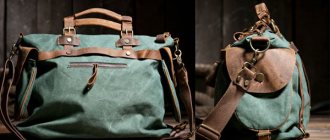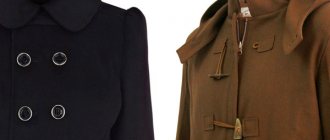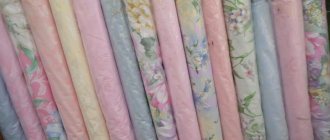Type and general description
Softshell (Softshell translated from English means “soft shell”) is a type of fabric consisting of several membrane layers firmly welded to each other. The concept of the material, from which clothing is made mainly for athletes and other lovers of an active lifestyle, is to apply a top, durable layer of clothing on a soft bottom layer. There can be two or more layers.
Softshell colors
Due to this, the best performance properties of the softshell are ensured: it protects from wind and cold, practically does not allow water to pass through, is airtight, retains heat well and does not hinder movement.
As a rule, the outer side of a softshell resembles nylon in appearance and feel, and the inner side resembles fleece. Between the layers of material there is a membrane layer that can “breathe” and remove fumes to the outside. The softness of the underside adjacent to the body is achieved through the use of fine-fiber pile, which remains dry even with the most profuse sweating.
Nylon
What kind of fabric is this - nylon? What are its characteristics and properties?
more details
Fleece
What is known about fleece fabric? What are its characteristics and properties?
more details
Softshell is an opportunity to abandon all kinds of undershirts that hinder movement and increase the overall volume and weight of the equipment.
Softshell is produced in China, Pakistan, Turkey, Poland, Great Britain, Germany and some other countries. In Russia, the production of this type of fabric has not yet reached any significant volumes.
Modern composition
The upper part of the fabric is quite elastic, resistant to stretching, and has a high density. On the reverse side there is a fine pile, velsoft. It will be the so-called skeleton of the product; it contains the main functions of the softshell. A large amount of lint constantly removes fumes generated during active recreation or sports and throws them out.
Attention! Things made from velsoft are often purchased for children.
Equipment for climbers
Thanks to ventilation, children do not sweat and do not get sick.
All dirt, water, snow, etc. also gets on the pile and does not penetrate the body. Softshell items always keep you dry and warm. There are things that are equipped with polyurethane “breathing” water-repellent membranes. The composition of the fabric depends on its purpose. Things can be sewn from polyester or polyamide fibers, and lycra can also be added. In recent years, wool has begun to be added to the composition.
You might be interested in what colors are velor cotton fabrics?
History of the creation of the material
Humanity owes the appearance of the softshell to the Scottish climber Hamish Hamilton. In the mid-1980s, he began studying the traditional clothing of the Arctic indigenous people, trying to understand how they could survive without modern high-tech fleece and breathable fabrics.
And I came to the conclusion: the clothing of the northern peoples is much superior in design to any technical solutions available in the “civilized” world.
Namely: protection from the wind was guaranteed by the outer surface (animal skin), and the fur facing inward provided insulation and formed a microclimate. It was important for the local hunter not to freeze, not to get wet and to maintain freedom of movement - and all this was provided to him by a single layer of skin and fur.
After countless experiments, Hamilton achieved his goal. For the outer layer, he used a thin, durable synthetic fabric called Pertex (a type of nylon), and instead of slow-drying fleece, he used lint, which worked like a wetsuit, instead of slow-drying fleece.
How to choose a softshell jacket
Many jacket manufacturers add Softshell to their composition. Since fabrics have different characteristics, you need to know their classification. A jacket made of reflective fabric can be used not only in active sports, but also in everyday life.
Lightweight softshell jackets
Men's softshell fabric jackets are very thin and light, more suitable for tourists or runners. They provide a little protection from bad weather and are great for fitness. You can put them in your bag where they don't take up much space. In addition to the wind, jackets protect from the hot sun in summer.
Products with wind protection
They are represented by jackets with a high level of protection against bad weather. In English the name sounds like “Windproff” - literally “wind blocking”.
Original specifications label
Most textile softshell jackets have integrated membranes, so the product will be stiffer, but not very breathable.
Universal softshell jackets
This is the most common type of jacket on the Russian market. Here two types of jackets with different properties are combined. For example, in the elbows and chest the fabric may be stiff and dense, but in the armpit area it can be light. This is how universal SoftShell products appear; they are very thin, but protect well from the wind. Such products will be more expensive than all presented models. Such products are mainly winter or demi-season.
You might be interested in All about cloth and fabrics for billiard tables
Fabric composition and properties
Softshell materials do not have a single set of components common to all; the composition varies depending on the conditions of use. The fabric consists of several layers that are firmly connected to each other by layering. The outer layer is always a durable material that is maximally resistant to stress and abrasion. The inner layers must be soft and breathable.
Typically, in the production of softshells, synthetic materials such as polyester, polyamide, polypropylene, polyurethane, and lycra are used. The most common combination is nylon (as the outer layer) and polyester.
Lycra
What is Lycra fabric and what are its features? What are the characteristics and areas of use?
more details
The purpose of the fabric determines its properties. Softshell is always:
Freedom of movement
Air or vapor permeability
Elasticity
Caring for SoftShell Products
Some people are not satisfied with the quality of the products, but this may be due to improper care and use.
What can cause fleece jacket fabric to deteriorate:
- Using body creams before wearing jackets;
- Smoke from the fire;
- Repellents;
- Drying on radiators or open sun.
The main care for fabric products is proper washing and constant impregnation of the products.
How and with what to wash softshell
It is advisable to wash softshell fabrics at a temperature of no more than 40 degrees. Only liquid powders are allowed to be used and dried in a vertical position at room temperature.
Cleaning process
If you wash it in a machine, you only need to set it to the delicate cycle. It is preferable to use front-loading machines. When washing, it is advisable to turn jackets inside out.
Attention! The most popular softshell laundry detergents are Grangers and Nikvax.
These products do not spoil the impregnation of products. But they are very difficult to remove large stains. If there are many problems, then it is better to contact a dry cleaner.
What is forbidden to do when leaving:
- Use of bleaches or powders with their additives;
- Do not use fabric softeners;
- Do not tumble dry;
- Ironing of products is prohibited.
Before washing, be sure to read the label on the jacket.
If all rules are followed correctly, the softshell will serve for many years.
A clear example of rain
Types of fabric
Depending on the production technology and the number of layers, softshells can be classified into:
- Two-layer - consisting of two compressed layers: top and pile (or fleece). Ideal for dry, windless and not too cold weather.
- Three-layer - top, membrane and pile (fleece). In this option, the bottom layer removes evaporation and retains heat, and the middle layer transfers moisture to the outer layer.
Softshells can also be divided into:
- Membrane - used in the production of heavy clothing with maximum protection from wind, rain and snow.
- Membraneless - used when sewing lighter clothes. Suitable for moderately low temperatures, and the degree of wind protection depends on the density of the material.
Hardshell vs. Softshell
Membrane and softshell jackets offer comfort, protection and many other benefits, although to varying degrees. However, they are very different from each other, and not just in name. The main differences between these jackets are the degree of protection against water and the level of breathability of the material.
Moisture-proof properties
Technically, a membrane jacket should be waterproof. The jacket consists of a woven face material with a waterproof membrane or coating that prevents water from penetrating inside. Thus, membrane jackets are mainly used by those who go hiking or camping in places exposed to rain and bad weather.
-50%
Outdoor Jacket Salewa 2021 puez (aqua 3) ptx w jkt poseidon
3 745 7 490
Softshell jackets are not completely waterproof, but they can be classified as water-repellent or water-resistant. They have water-repellent coatings that are best for outdoor activities in light rain. Because of this, they are primarily worn as a midlayer and under a waterproof membrane jacket.
-50%
Outdoor Jacket The North Face 2018 w inlux softshl hd sodalite blue
4 791 9 581
Buy
Breathability
Another key difference between a membrane jacket and a softshell jacket is breathability. Membrane jackets hold water well, but often their breathability is not ideal. No matter how breathable a membrane jacket is, there is always the possibility of moisture (such as sweat or condensation) forming and remaining inside the jacket. Softshell jackets generally have better breathability. The fabric from which they are made, as well as the features of the clothing (for example, sleeves for ventilation) allow vapors to pass freely through the jacket and keep the body dry.
-30%
Running jacket SALOMON 2018-19 lightning warm sshell jkt w hibiscus/hibiscus
9 093 12 990
Buy
Materials
Typically, softshell jackets are made from a combination of materials such as polyester and nylon. They are woven together to create a durable and comfortable material. However, note that different softshell jackets can be made from different materials, depending on the manufacturer's design and the type of jacket (more on this later). Softshell jackets are not completely waterproof, but they breathe well and are comfortable to use and pleasant to the body.
-50%
Ski fleece Maier 2018-19 Fabolo M red dahlia
4 595 9 190
Pros and cons of fabric
Advantages of softshells:
- High level of moisture resistance.
- Good wind protection.
- Ease.
- Strength.
- Elasticity.
- Wear resistance.
- Resistant to stains.
- Form stability.
- Good thermal insulation.
- High level of air and vapor permeability.
- The ability to dry quickly is right on the body.
Disadvantages of the material:
- The bottom layer is not elastic enough.
- Not suitable for wearing in extreme cold (membraneless fabrics).
- Requires special care.










